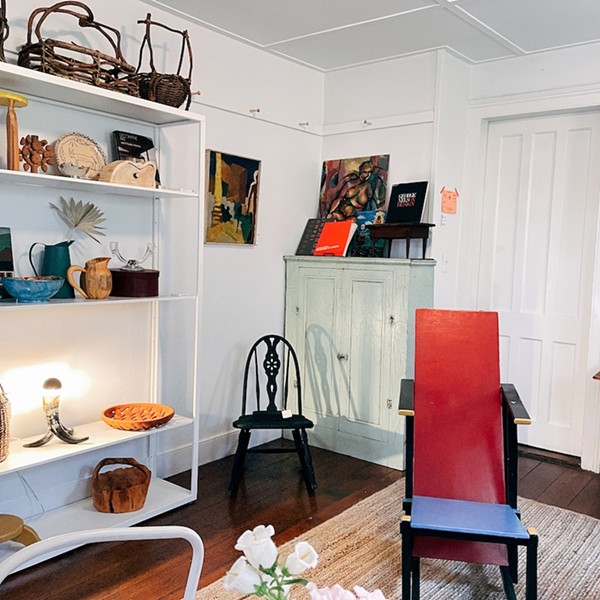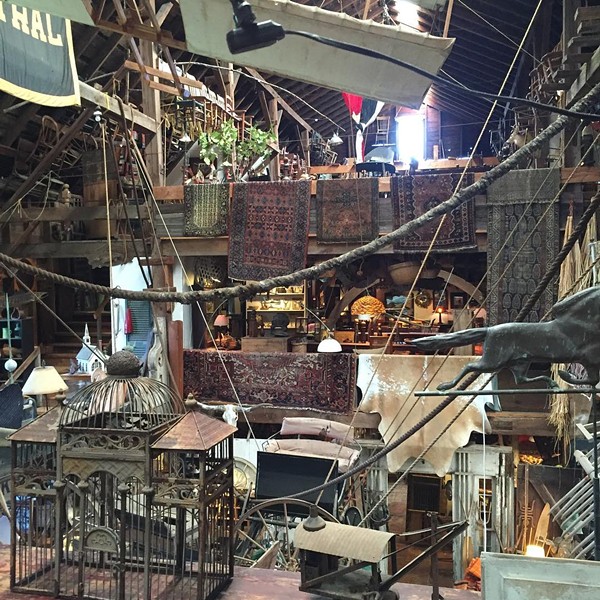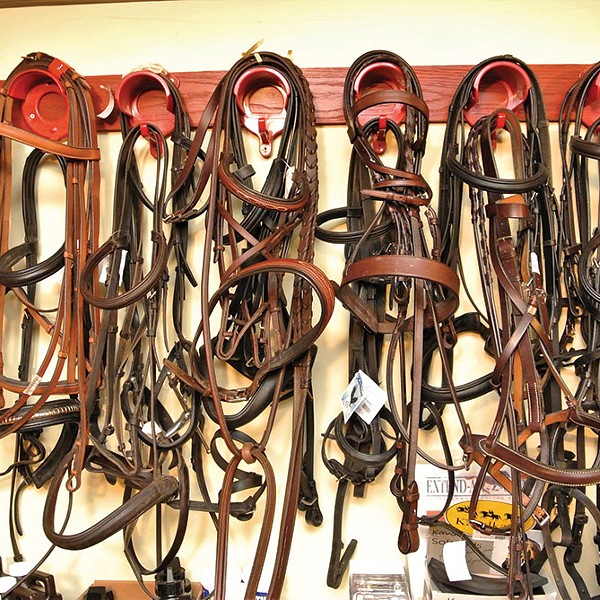There comes a time for nearly every antiques shopper when he or she spots an all-too-familiar item—something they've owned, still own, or have seen at a relative's house—and wonders, "Could I really sell that old thing for this price?"
Of course, when an antique become trendy to own—such as record players, or those beautiful, clunky black typewriters with the glass keys—its value and cost increase, due to widespread nostalgic popularity. But what determines the value of other dusty attic finds, and how does one discern priceless from worthless? Is that serveware fine china or a made-in-China knockoff? Was that handsome, weathered trunk sitting in a protected storage space for decades, or on the sales floor at Pier 1 last month? When blatant examination won't do (is the book labeled "First Edition"? Was the Marshall's sticker left on that vase?) ask the seller.
"Owners are generally knowledgeable about the products they carry; talk to them," suggests Iris Oseas, who co-owns Van Deusen House Antiques in Hurley with her husband Jonathan. "The shop should be able to guarantee an item when you purchase it. For example, we've been in business for more than 50 years. In our shop, when you buy something, you get a receipt with the item's description. If I happen to be mistaken and write the wrong era, and you purchased it based on misleading information, we'll return your money."
Van Deusen House Antiques carries general centuries-old wares, with a few specialties, including woodworking and trade tools, china and glassware, paper ephemera (note cards, sheet music, and the like), and some midcentury-modern collectibles. "We try to acquire 18th-century materials—but some items are from the 19th century, and the few from the 20th are what we refer to as collectibles, rather than antiques," Oseas says. "US customs laws determine an 'antique' as something at least 100 years old."
Distinguishing Trash from Treasure
Rather than relying on a shopkeeper or collector's word, there are several ways to educate oneself. "You learn a lot from visiting museums," she adds. "If you're a museum trotter, take a look at what styles you like based on an era, then get a good book on that era so you know what details to look for."
Sanford Levy, owner of Jenkinstown Antiques in New Paltz, agrees. "When I was about 17 I knocked on the door of an antiques dealer's shop in Washingtonville asking him to teach me. As I left, he said to go home and study, and I did—I suggest others do the same. I discovered there are tons of books to learn from. Read. Go to museums. Visit antiques shows. Sit at auctions—with your hands down so you don't accidentally buy something—and just listen. There are many ways to learn."
Levy, who opened up shop in 1974, specializes in items from the Hudson Valley region but his shop offers an array of other textiles, china, and furniture of varying prices. "When it comes to determining value, another thing to know about antiques—high price doesn't always mean high value. People tend to think everything's expensive. But honestly, plenty of 18th-and 19th-century items are findable and affordable," Levy says. "And I always suggest to buy the best you can at any given moment; you're better off with one very nice thing than three of lesser quality."
While Hudson is the most widely known destination for antqiuing in the Hudson Valley, Beacon also hosts a number of shops, including Dickinson's Antiques and Studio Antiques, that offer a connection to the old while the city remakes itelf as a hip destination for transplants from New York City.
History in the Making
While it's fulfilling to roll up your sleeves and put some time into refinishing an object, often it just needs a thorough cleaning to bring out the beauty of its original finish. And if you're thinking of buying a deteriorating object to bring back to life and perhaps resell, take heed: More often than not, you'll decrease its value. "Furniture and other items with their original finish are definitely worth more," Levy says. "For instance, an 18th-century chair might be worth $2,000, but if it's been stripped, sanded, and polished with a high-gloss shellac, I'd have trouble selling it for $500." The rules are malleable, however, for broken furniture. "Say a desk was missing a leg, rendering it unusable," he explains. "Adding a fitting limb could increase its value. A four-legged desk shouldn't be limping around on three legs the rest of its life."
So what are the most important traits to look for when antiquing? "Age, quality, rarity, and condition. Especially rarity," Oseas says. "But to me, I think it's just as important to buy according to your taste, especially when you're looking for furniture: If you have a formal house, buy formal furniture. If you have a country house, there are some great quality pieces for that style. Determine what you actually like—don't buy just to invest. Don't play stock market with antiques. Even with collectibles it's okay to buy something just because you think it's a pretty object. There's a chance its value can increase with age. Remember—everything is moving into history."
















